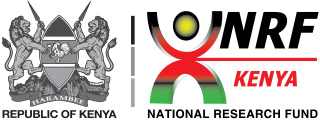Intergrated Water Resources Management
Permanent URI for this collection
Browse
Browsing Intergrated Water Resources Management by Funder "African Development Bank (AfDB)"
Now showing 1 - 2 of 2
Results Per Page
Sort Options
Publication A Test of the Applicability of the Lake Habitat Survey for Hydromorphological Monitoring of a Tropical Alkaline Lake (Simbi) with a Fisheries Potential(International Journal of Fisheries and Aquatic Studies, 2019-09) Opiyo, Stephen; Getabu, Albert Mochache; Sitoki, Lewis Morara; Shitandi, AnakaloThe Lake Habitat Survey (LHS) is an ecological integrity monitoring tool developed for temperate lakes by an independent team of researchers to support the implementation of the EU Water Framework Directive (WFD). It has been widely applied but more testing is needed in different settings, therefore this study investigated the applicability of the LHS protocol in assessing the habitat quality of a tropical alkaline lake in the face of increasing impacts of anthropogenic pressure and climate change. The LHS metrics of Lake Habitat Quality Assessment (LHQA) and Lake Habitat Modification Score (LHMS) estimated for Lake Simbi collectively suggested that the physical habitat quality of the lake is moderate since its hydromorphology is moderately modified. In conclusion, LHS is effective for monitoring ecological condition of water bodies to inform decision making for conservation and management hence it is suitable for adoption in Kenya and the tropics as one of the standard tools for lake environmental assessments.Publication Analysis of spatial and temporal drought variability in a tropical river basin using Palmer Drought Severity Index (PDSI)(Acadamic Journals, 2017-08-31) Wambua, Raphael; Mutua, Benedict; Raude, JamesAnalysis of spatial and temporal drought variability in the upper Tana River basin using Palmer Drought Severity Index (PDSI) was conducted. The drought is critical for formulation of mitigation measures in the river basin. A monthly temporal and 90-m spatial resolution was applied. This was achieved within ArcGIS environment. Climatic data for 1970 to 2010 was used for computation of the PDSI while the missing data sets were filled using Artificial Neural Networks (ANNs). The results of PDSI for dry and wet seasons at meteorological stations indicate that the time series plots for the PDSI values for dry season are generally lower than those for the wet seasons. The PDSI values for meteorological stations located at the lower elevation of the basin are lower than those located at higher elevation. On the other hand, spatially distributed drought severity based on PDSI show that the ranges of maximum and minimum drought severity values in 1970 are -0.868 to -0.804 and -0.675 to -0.610 respectively. These values of drought severity occur respectively in the north-western and south-eastern areas of the basin. PDSI values increased from the range -0.675 to -0.610 in 1970 and from -1.087 to 0.957 in 2010 for the north-eastern areas of the upper basin. The south eastern areas of the basin are more prone to drought risks than north-western parts. Use of the PDSI reflects the spatial heterogeneity and temporal variability of drought across the basin. The drought assessment offer technical approach for comprehensive understanding of drought for effective drought-induced disaster mitigation and its management, with a view to reducing adverse effects on livelihoods.

